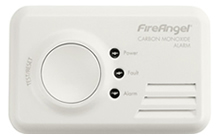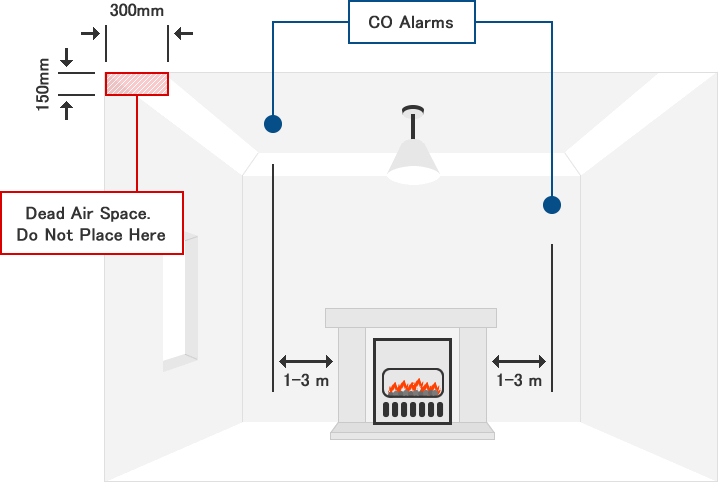-
Contact
Sales & Customer Service
0800 612 6537 support@safelincs.co.uk Live ChatDelivery Enquiries
0800 077 6149 - Resources
Fire & Safety Solutions
CALL OUR TEAM NOW 0800 612 6537
Lines open today 8am - 6pm
Free Delivery
on 100s of Products
Live Chat - Online
Instant help & Advice
Trade Discounts
and exclusive pricing
0% Credit Available
Open an account now
5 Star Customer Feedback

A Landlords Guide to: The Provision of Carbon Monoxide Alarms in Rented Accommodation in Scotland (2015)
Before reading on: Please note that this article was written before the implementation of new regulations on 1st February 2022 that further amended the Repairing Standard of the Housing (Scotland) Act 2006 and consequently the Tolerable Standard. For requirements of the latest development in legislation for the provision of CO alarms in Scottish homes, please read our guide New Regulations for Scottish Smoke and Carbon Monoxide Alarms.
New regulations regarding the provision of long-life carbon monoxide (CO) detectors in privately rented housing in Scotland are due to come into effect from the 1st of December 2015.
The advantage of this change for the rental sector is that these rules will harmonise the existing fragmented legislation covering CO detection in Scotland, and will help ensure that all private tenants are protected from carbon monoxide in equal measure.
The addition to the Housing (Scotland) Act is an amendment to the existing Repairing Standard which, in basic terms, requires landlords to ensure that rented properties are habitable, structurally sound and inherently safe. As a result of the impending changes, this duty is set to include the provision of apparatus designed to detect carbon monoxide.
What do Landlords need to know?

Landlords in Scotland need to ensure that they comply with this new legislation. They are requited to install a carbon monoxide detector in rented properties where a fixed combustion appliance of any kind, other than appliances used exclusively for cooking, is present.
The following advice was issued as part of the Scottish Government's guidance in preparation for the change:
"Landlords…should be aware of their personal responsibility to ensure any house they rent meets the repairing standard which now includes this new duty in relation to carbon monoxide detection" Scottish Government's Statutory Guidance for the Provision of Carbon Monoxide Alarms In Private Rented Housing.
What is the Repairing Standard?
The Repairing Standard is a core component of the Housing (Scotland) Act 2006, and outlines the responsibilities of private landlords letting property within Scotland.
The primary focus of the Repairing Standard is to ensure a basic level of upkeep is maintained in relation to any building being rented out. The standard covers a variety of aspects including things such as the structure of the property, fixtures, fittings and appliances, any furnishings provided by the landlord, the level of fire detection required, and the newest addition to the list which is protection against the danger of carbon monoxide poisoning.
Landlords failing in relation to any aspect of their duties as defined by the repairing standard are liable to action being taken against them by the Private Rented Housing Panel (PRHP).
Why is this change important?
Studies have shown that the probability of exposure to carbon monoxide poisoning in privately rented homes is three times greater than in other housing types. The proposed addition to the Housing (Scotland) Act supplements changes already introduced to Scottish building regulations in October 2013. Since then, Scottish building regulations have mandated that a CO alarm must be fitted whenever a boiler, fire, heater or stove is installed or replaced. Fitting carbon monoxide detectors will prevent the effect of exposure to CO and also deaths connected with this gas.
Will I be affected by this change?
If you are a landlord, the chances are yes. Landlords across Scotland will soon be duty bound to provide carbon monoxide detectors with integrated long life batteries within ALL rooms hosting a combustion appliance.
This means that even if a CO detector with standard, removable batteries has been supplied previously, it must be exchanged for, or supplemented by a unit with a sealed long life battery in lines with the regulations.
"CO detectors should be powered by a battery designed to operate for the working life of the detector" Scottish Government's Statutory Guidance for the Provision of Carbon Monoxide Alarms In Private Rented Housing.
But my HMO already has a CO detector installed?
Whilst current guidance governing the licencing of HMO's in Scotland already requires that a carbon monoxide alarm must be present in any room containing a gas appliance, the new legislation goes a step further.
Pre-existing HMO specific rules meant landlords may not have been legally obliged to provide a CO detector if only coal or oil was used for fuel within the property. The impending general legislation widens the responsibilities of HMO landlords by referring to all combustion appliances rather than being limited to any single fuel source.
Another significant development is the insistence that CO detectors provided by landlords must be powered by a long-life battery. In the light of these two changes, landlords of HMO's must take care to ensure they are still compliant in respect of the new general legislation.
Where should CO detectors be installed?
The legislation dictates that a carbon monoxide detector should be located in every room containing a fixed combustion appliance and in any bedrooms or living rooms through which a vent from a combustion appliance passes.
To ensure the safety of your tenants as per the Repairing Standard it may therefore be necessary to install more than one device.
As for the specific location of the alarm within each identified space, attention should always be paid to the instructions supplied with the detector being installed. However, the standard guidance is that ceiling mounted CO detectors should be positioned a minimum of 30cm away from any walls, and wall mounted detectors a minimum of 15cm below the ceiling.
Most CO detectors can either be wall or ceiling mounted, but all must be positioned away from corners, windows and spaces with restricted air-movement, hence the standard installation instructions referenced above.
The ideal distance between a CO detector and an appliance is between 1 and 3 metres in an average sized room as per the graphic below.

What should be done if an appliance is in a cupboard?
Boilers are commonly found in cupboards or under stairs. Should you rent out a property where the boiler is located in an enclosed space you should follow the following guidance:
"If the combustion appliance (primarily boilers) is located within a small space, usually a cupboard, the detector should be sited outside the space/cupboard with the appropriate distance between appliance and detector of between 1 and 3 metres." Scottish Government's Statutory Guidance for the Provision of Carbon Monoxide Alarms In Private Rented Housing.
My appliance is in the loft, what should I do?

Further specific instructions have been provided for instances where a combustion appliance is. If your property comes under this guidance, you should follow the following information:
"If the combustion appliance (primarily boilers) is located in an attic, the detector should ideally be sited between 1 and 3 metres from the appliance in the attic and another interlinked detector sited outside the attic near the attic hatch." Scottish Government's Statutory Guidance for the Provision of Carbon Monoxide Alarms In Private Rented Housing.
Therefore, if your property features a boiler in a loft space, it is paramount that tenants are protected and can be alerted in the event of a carbon monoxide leak. Having interconnecting carbon monoxide alarms, which can communicate with each other through a radio frequency or via a wired connection from one unit to another, ensures that tenants can be alerted should CO be present in their loft.
Are Landlords responsible for maintaining the alarms?
The duties imposed by the Repairing Standard means that the ongoing responsibility for ensuring carbon monoxide detection is in place falls to the landlord. Should a detector fail or expire during an active tenancy, it is the responsibility of the landlord to supply a suitable replacement.
What happens if I don't install CO alarms as directed?
If a Landlord in Scotland was found not to be complying in their duty to provide CO detectors for their tenants they can be referred to the Private Rented Housing Panel (PRHP). Tenants as well as the local authority can report a Landlord.
The PRHP then has the power to issue a 'Repairing Standard Enforcement Order' which obliges the landlord to comply within a set timeframe or face further action.
I need further advice, where can I go?
Final judgements regarding the compliance of landlords in Scotland can only be made by the PRHP. However, we are happy to share our understanding and experience of the legislation to help you identify the best products to ensure you comply with the legislation and protect your tenants.
Safelincs offers a vast array of carbon monoxide detectors and a variety of information resources throughout the website, including a comprehensive advice section dedicated to helping landlords handle fire safety issues. You will also find a section for landlords within our widely praised fire safety forum.
Of course, if you have any further questions regarding this legislation that have not been covered, please feel free to contact our customer service team via support@safelincs.co.uk, or on 0800 612 6537. We would be happy to help, and will always aim to identify the most cost effective products to ensure you comply with this legislation.
Reviewed: 29/09/2022 (doc:127 V1.2). Our articles are reviewed regularly. However, any changes made to standards or legislation following the review date will not have been considered. Please note that we provide abridged, easy-to-understand guidance. To make detailed decisions about your fire safety provisions, you might require further advice or need to consult the full standards and legislation.




















